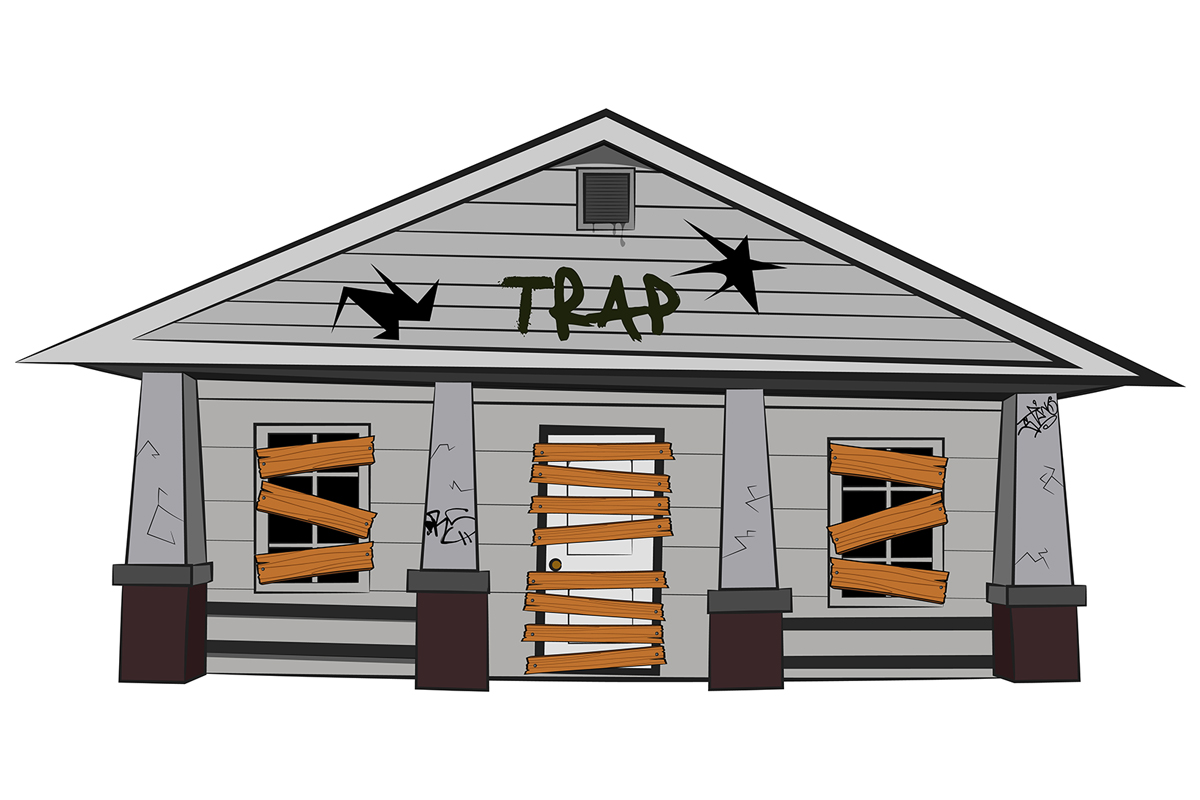
Understanding Your Local Real Estate
Market: A Guide for New Agents
Why Market Knowledge is Critical for Success
Obtaining a California real estate license and starting a career in real estate Read more...
Understanding Your Local Real Estate
Market: A Guide for New Agents
Why Market Knowledge is Critical for Success
Obtaining a California real estate license and starting a career in real estate can be both exhilarating and daunting. The real estate market is dynamic with nuances that can dramatically affect both the buying and selling process. For agents, particularly those new to the field, understanding the local market isn't just a bonus—it's crucial for success.
Having a high level of market knowledge means agents have the ability to make informed decisions, provide credible advice to clients, and forecast market trends. This insight can prove invaluable when negotiating deals, setting realistic expectations, and ultimately ensuring client satisfaction. For a real estate agent, comprehensive market understanding can dramatically influence income and career longevity. In fact, one of the primary factors that influence real estate agent income is how well they adapt and respond to market conditions.
Market Analysis Techniques: How to Analyze Housing Trends, Pricing, and Client Demands
Analyzing Housing Trends
Understanding housing trends is foundational for any real estate professional. This involves:
Historical Analysis: Reviewing the past price fluctuations and sales volumes in the area to predict future trends.
New Developments: Keeping tabs on new constructions, zoning changes, and community projects which can affect property values.
Market Indicators: Observing indicators such as average days on market (DOM), inventory levels, and price changes to gauge market health.
Understanding Pricing
Pricing strategy is crucial and can be honed by:
Comparative Market Analysis (CMA): This technique involves comparing the prices of recently sold properties that are similar in size, location, and condition to determine the market value of a listed property.
Supply and Demand Dynamics: Understanding the balance between buyers and sellers in the area can help set competitive pricing and anticipate market shifts.
Assessing Client Demands
Knowing what the buyers and sellers want is key:
Buyer Preferences: Stay informed about the features and amenities that are most desirable to buyers in your local market.
Seller Expectations: Gauge what sellers are looking for from an agent and how you can align your services to meet their needs.
Staying Informed: Tips for Keeping Up with Local Real Estate News and Updates
Regular Updates
Agents must stay updated with real-time information:
Local News and Journals: Subscribe to real estate publications.
Online Resources: Utilize platforms like realtor.com and Zillow to follow market trends and updates.
Networking
Building a network can provide insights and opportunities:
Real Estate Groups: Join local real estate groups and associations to connect with peers.
Seminars and Webinars: Attend industry seminars and webinars to learn from experienced professionals.
Continuous Education
Never stop learning:
Continuing Education: Enroll in continuing education courses at a real estate license school to keep up with new laws and market strategies.
Certifications: Obtain additional certifications that can boost your expertise and marketability.
Data Interpretation
Understanding data is as important as gathering it:
Market Reports: Generate and study market reports which highlight trends, shifts, and potential growth areas.
Client Data Management: Use CRM systems to manage client data effectively, tracking preferences, interactions, and feedback.
Social Media Insights
Social media platforms can be a goldmine of information:
Market Sentiment Analysis: Gauge buyer and seller sentiments through comments and discussions on platforms like Facebook and Twitter.
Targeted Advertising: Use the data from social media advertising to understand demographic preferences and behaviors.
How Deep Market Knowledge Can Attract Your First Clients
For new real estate agents, mastering the local market is more than a skill—it's a necessity. Deep market knowledge not only helps in attracting the first few clients but also sets the foundation for a robust, long-term career. Being well-versed in market analysis techniques, staying informed through reliable sources, and effectively using data to make informed decisions are crucial steps in becoming a successful agent.
Agents equipped with thorough market understanding are able to offer tailored advice, predict market trends, and serve their clients' best interests. Moreover, in a competitive field like real estate, being knowledgeable is a major selling point—it builds trust and credibility with clients.
Remember, the journey from a novice to a skilled agent is continuous. Every piece of information helps build a clearer picture of the market. Whether you are just starting at a real estate license school, attending seminars, or networking with other professionals, each effort contributes significantly to your success in real estate.
By combining passion with knowledge, and ongoing education, new agents can not only meet but exceed expectations, turning challenges into opportunities and inquiries into successful transactions. Start strong, stay curious, and keep learning—your path in real estate is paved with potential.
Love,
Kartik
|

Factors Influencing Real Estate Agent Income
The allure of the real estate profession is undeniable: the potential for financial freedom, flexible work schedules, and the satisfaction of helping clients Read more...
Factors Influencing Real Estate Agent Income
The allure of the real estate profession is undeniable: the potential for financial freedom, flexible work schedules, and the satisfaction of helping clients find their dream homes. Yet, the reality is that income in real estate can vary. While some agents earn well into the six or seven figures, others struggle to make ends meet. So, what factors influence real estate agent income?
Understanding these factors is essential for anyone considering a career in real estate, or for existing agents seeking to increase their earnings.
Location
Geographic location can play a major role in an agent's earning potential. Since most real estate agents earn a percentage of the sales price of a property, practicing in high-cost urban areas can lead to larger commissions. In contrast, agents in lower priced or more rural locations may deal with lower property values and, consequently, lower commissions. However, it's important to note that the cost of living can also vary significantly between locations.
While setting up shop in Beverly Hills might seem tempting, remember that high-priced areas often attract lots of agents because of the big commissions they can earn. In busy areas like Manhattan Beach or Newport Beach, there are so many agents that it becomes really competitive. To stand out, agents need to be great at marketing themselves, negotiating deals, and making connections. They also need to close deals regularly to afford the high cost of living in these areas and maintain their lifestyle.
Market Conditions
Economic factors like interest rates, housing demand, and local market trends can have a profound impact on agent income. When interest rates are low and demand is high, it's a seller's market, and agents can earn more. Conversely, in a buyer's market with high interest rates and low demand, transactions may be slower, impacting agent income. Additionally, seasonal fluctuations can affect real estate activity. Spring and summer tend to be busier seasons, while the market may slow down during the fall and winter months.
Experience and Skills
Experience levels often correlate with income. Seasoned agents have a larger network, better negotiation skills, and in-depth market knowledge. This allows them to close deals more and command higher commissions. Moreover, niche expertise and specialized knowledge in areas like luxury homes, commercial real estate, or investment properties can be lucrative. Continuous learning and professional development are also crucial for staying ahead in a competitive market.
Business Model and Commission Splits
The way commissions are split between a real estate agent and their brokerage can greatly influence their earnings. Common splits can vary widely, but an agent generally keeps more as they gain more experience and close more deals. Some brokerages offer even better terms or a 100% commission model, where agents keep all the commission but pay a monthly or transaction fee to the brokerage.
While these offers might sound good, agents should think carefully about what they might lose in terms of support and resources from traditional brokerages. For instance, brokerages offering lower splits often provide more resources, such as CRM systems or postcard marketing and mailing services. Therefore, while an agent on a higher split might earn more per deal, their overall profit could be lower as they might end up paying for these services out of pocket. Understanding the compensation structure is crucial when picking a brokerage because it directly impacts how much money an agent can make and their overall financial success.
Marketing and Lead Generation
Effective marketing and lead generation strategies are crucial for success in real estate. Agents need to create a strong online presence while utilizing social media. Digital marketing campaigns are a must to attract potential clients. Building a personal brand and establishing oneself as a trusted expert in a specific area can also lead to increased visibility and higher earnings. Lead nurturing and conversion strategies are equally important for turning leads into closed deals.
Client Relations and Reputation
Exceptional customer service and client satisfaction are key to generating repeat business and referrals. Agents who prioritize building strong relationships with their clients and providing a seamless experience are more likely to see long-term success. A positive reputation can lead to organic growth and increased income over time.
Specialization and Niche Markets
Specializing in certain types of properties or catering to specific demographics can be a strategic way to enhance income. By becoming the go-to expert in a niche market, such as eco-friendly homes, senior living communities, or vacation rentals, agents can attract a loyal clientele and potentially command premium commissions.
Real estate offers tremendous opportunities for motivated individuals to achieve financial success and build a rewarding career. However, it's essential to recognize that income is influenced by a multitude of factors.
By understanding these factors and adapting their strategies, agents position themselves for success in this dynamic industry.
When creating your business plan, keep the above factors in mind. You might not be able to immediately change where you practice, and reputation isn't built overnight, but you can always turn up the marketing and keep plugging away. Real estate sales is a career that is built brick-by-brick not overnight.
Love,
Kartik
|

In the competitive and often unpredictable world of real estate, success hinges not just on knowledge, but also on how well you prepare and adapt. I wanted to write an article exploring the critical roles Read more...
In the competitive and often unpredictable world of real estate, success hinges not just on knowledge, but also on how well you prepare and adapt. I wanted to write an article exploring the critical roles of a well-honed strategy and a resilient mindset, and offer practical advice for real estate professionals aiming to excel in their careers and navigate the complexities of the market confidently.
The Importance of Preparation
In real estate, meticulous preparation is key to managing a complex schedule effectively. For agents, staying organized is crucial for handling multiple listings, client meetings, and dynamic market conditions. A structured schedule allows for allocating adequate time to each client, providing personalized service that addresses unique needs and challenges. This readiness not only enhances professionalism but also builds trust and reliability among clients—cornerstones of long-term success in the industry.
Managing Distractions as a Self-Employed Agent
Distractions can undermine even the best-prepared agents. As a self-employed professional, it's vital to manage your time and workspace effectively. Setting a daily schedule mimicking a traditional office environment, creating a dedicated workspace, and using technology wisely can significantly enhance focus and productivity. Prioritizing tasks and taking regular breaks are also essential practices that help maintain efficiency and prevent burnout.
Maintaining focus can be difficult without the structured environment of a traditional office. Distractions are a significant challenge for real estate agents, mainly because many operate as self-employed professionals, which requires a high degree of self-management and discipline. Poor time management and reduced productivity can directly impact an agent’s ability to serve clients effectively. Real estate agents must respond quickly to client needs and market changes; thus, any delay or oversight caused by distractions can result in missed opportunities or diminished service quality.
Real estate can demand a high degree of accuracy in handling transactions and paperwork. Distractions that lead to errors can have serious consequences, potentially harming the agent’s reputation and client relationships. Managing distractions effectively is crucial for maintaining professionalism, ensuring client satisfaction, and upholding the reliability expected in the real estate industry.
Finding Solutions to Common Real Estate Problems
Real estate transactions involve multiple parties and interests, often leading to complex challenges. Whether dealing with property title issues, financing setbacks, or unexpected inspection results, there is always a potential solution. Effective strategies include:
Proactive Communication: Keep all parties informed to prevent misunderstandings and build trust.
Flexibility and Creativity: If initial solutions falter, think outside the box. For instance, if financing falls through, suggest alternative lenders or creative financing options like seller financing.
Leverage Expertise: Consult with seasoned colleagues or specialists, such as real estate attorneys or title agents, to gain new perspectives and solutions.
Stay Updated: Keeping abreast of changes in real estate laws and regulations can preempt and mitigate potential issues.
The Power of Positive Self-Talk
The way we converse with ourselves significantly influences our actions and outlook, especially in high-stakes situations like negotiations or competitive markets. Positive self-talk, such as affirming "I am a skilled negotiator" or "I can handle this challenge," can shift your perspective and boost your confidence, thereby enhancing your performance.
Consistency Leads to Mastery
Success in real estate isn't just about big moves; it’s also about the accumulation of small, consistent actions. Regularly engaging in activities that enhance your skills, like market analysis or client relationship management, builds expertise over time. This principle of consistency is particularly pertinent in real estate, where persistence and resilience often determine long-term success.
Embracing thorough preparation and maintaining an optimistic outlook are indispensable in enhancing your professional performance and managing personal challenges in real estate. By equipping yourself with the tools to find solutions and succeed, you can confidently navigate every aspect of your career. Remember, in the dynamic field of real estate, every problem indeed has a solution—it's up to you to find it.
Love,
Kartik
|

Rediscovering Your Drive in the Real Estate Industry
Real estate agents need to read this article.
Remember when you first got your real estate license—those early days blended fear, excitement, Read more...
Rediscovering Your Drive in the Real Estate Industry
Real estate agents need to read this article.
Remember when you first got your real estate license—those early days blended fear, excitement, and formidable challenges. When you first get your real estate license, new agents are armed with raw ambition and the pressure to learn quickly, adapt, and carve out a path to success.
Do you remember that intense drive when you first started? That sense of urgency that spurred you to make calls, try new strategies, and relentlessly pursue your goals?
The Lost Spark: Nostalgia for Simpler Times
Many seasoned professionals in the industry often find themselves longing for the market of the past, even as recent as the pandemic era, when the real estate market was ablaze with activity, and deals seemed more straightforward. However, as the market has evolved, so have the challenges, demanding a different kind of resilience and adaptability.
During this period, many markets experienced unprecedented buyer interest and sales activity, fueled by low interest rates and a surge in demand for residential properties. This led to quicker sales, often with multiple offers that drove prices up and simplified the selling process for many agents.
However, the market has since shifted. Interest rates have risen, economic uncertainties have increased, and buyer behavior has changed, leading to a more balanced or even a buyer's market in some areas. These changes have introduced new complexities to the transaction process, including longer sales cycles, more price negotiations, and sometimes increased difficulty in securing buyers' financing.
Adapting to Today's Real Estate Market
In a competitive real estate market, success now demands a proactive approach. Whether you're aiming to acquire a California real estate license or striving to excel at our top real estate school, the essence of progress lies in your willingness to dive deep into your responsibilities.
The market today does not favor the passive. It rewards those prepared to roll up their sleeves and engage directly with the work that matters—through conversations, appointments, and proactive engagements.
Core Strategies for Success
I suggest a few things you can do to achieve success in the right mindset. Consider the below:
Engage in Strategic Planning: Focus on specific outcomes rather than just tasks. Ask yourself, "What measurable results do I want to achieve today?" This approach helps steer your efforts toward impactful activities.
Practice Through Role-Playing: Regularly engage in role-playing with peers or alone to refine your skills in handling objections, negotiations, and client interactions, which boosts your confidence and effectiveness.
Diligent Follow-ups and Communication: Consistent communication is crucial. Please make it a non-negotiable part of your day to reach out to existing connections and forge new ones, ensuring you remain at the top of your mind and build trust.
Leverage Technology and Tools: Embrace the latest real estate technologies, such as CRM systems, virtual tour software, and market analysis tools. Efficient use of technology can streamline workflows, enhance client presentations, and keep you ahead in a competitive market. It also helps maintain accurate records and provides analytics for better decision-making.
Cultivate a Strong Online Presence: In today's world, having a robust online presence is crucial. Regularly update your professional profiles on social media and real estate platforms. Share insightful articles, market updates, and success stories to engage your audience and increase your visibility. This approach helps build a personal brand that attracts potential clients.
Expand Your Network: Attend industry conferences, seminars, and community events to meet potential clients and other real estate professionals. Networking is vital in real estate as it opens doors to new opportunities, referrals, and partnerships. Encourage your team to build a diverse network supporting various aspects of real estate transactions.
Personal Development and Continuous Learning: Encourage ongoing education through courses, certifications, and training. The real estate market is continually evolving, and staying updated with the latest regulations, technologies, and sales techniques can give you an edge. Personal development also includes improving negotiation and interpersonal skills, which are crucial in real estate.
Reflecting and Reigniting Passion
Reflect on what initially drove you to this industry. What goals and aspirations once pushed you out of your comfort zone? If you find it hard to answer, it might be time to reignite your passion. Set inspiring goals, create structures to minimize distractions, and hold yourself accountable—perhaps through commitments to loved ones or charitable pledges.
Embrace the Journey
Remember the zeal of your early days as we navigate the demanding real estate market. The industry might have changed, but the fundamental principles of hard work, passion, and persistence remain the same. Whether you're just out of real estate school or seasoned enough to mentor others, success is paved with the efforts you're willing to put in. What's your next move? How will you adjust your strategies to thrive in today's estate landscape?
Remember, the path to extraordinary achievement is paved with ordinary, consistent actions. Start today, and who knows where you will be in a year?
Love,
Kartik
|

Mastering Self-Representation in Real Estate Transactions
As a licensed real estate professional, you face a critical decision: should you hire an agent or handle your property transactions independently? Read more...
Mastering Self-Representation in Real Estate Transactions
As a licensed real estate professional, you face a critical decision: should you hire an agent or handle your property transactions independently? For those contemplating self-representation, this choice blends challenges with rewards. This article explores the nuances of representing oneself in real estate deals and offers a strategic approach for agents considering this path.
Legal Viability of Self-Representation
Yes, as a licensed real estate agent in California under the employ of a broker, you are fully capable of representing yourself in property transactions. However, this autonomy necessitates clear upfront disclosure of your dual role as both agent and party in the transaction.
Brokerage Affiliation: A Crucial Step
Before venturing into self-representation, it is essential to secure affiliation with a reputable brokerage. This relationship often involves sharing a portion of your commission in exchange for their support and services. The process includes choosing a brokerage that aligns with your professional values, undergoing interviews, and formally associating your license with them.
Advantages of Self-Representation
The financial benefits of self-representation are notable. Typically, a buyer’s agent splits a commission with the seller’s agent. By acting as your own agent, you could retain the entire commission, potentially saving thousands. Additionally, having direct control over negotiations, listings, and transaction coordination enhances efficiency and minimizes reliance on third parties, which is particularly beneficial for seasoned agents with strong market knowledge and negotiation skills.
Risks and Considerations
Despite its advantages, self-representation carries risks, especially for less experienced agents. The complexities of transaction processes, legal requirements, and market dynamics require extensive knowledge and experience. Mishandling paperwork, disclosures, or legal compliance can lead to significant financial and legal repercussions.
For Novice Agents: Consider Collaboration
If you are a new licensee or unfamiliar with local market dynamics, collaborating with an experienced agent could be advantageous. This partnership allows you to learn while still earning through shared commissions—an effective strategy to build experience and confidence before undertaking transactions independently.
Benefits of a Local Expert
Partnering with an agent knowledgeable about your target area can be invaluable. Their expertise can aid in accurately assessing property values, understanding neighborhood trends, and making informed decisions that maximize investment returns.
Experienced Agents: Less Risk, More Reward
For seasoned professionals, self-representation offers a pathway to maximize earnings and transaction volumes. However, it’s crucial to adhere to state regulations and coordinate with your brokerage to ensure all practices are compliant.
Emotional Considerations in Transactions
Even the most experienced agents find real estate transactions emotionally charged. Working with another agent can provide a buffer against emotional decisions that might negatively impact the transaction. A home is more than a building; it’s a repository of memories and aspirations, making any transaction feel personal and emotionally intense.
Here's how another agent can help: they act as a neutral party, unattached to the house or its memories, allowing them to view the deal more objectively. They can provide advice based on market data and facts, ensuring decisions are made with clarity and professionalism, not swayed by emotions.
Is a Real Estate License Worth It for Self-Representation?
Obtaining a real estate license for self-representation offers more than commission savings. It also provides networking opportunities and a potential new career trajectory. However, consider the ongoing costs of maintaining a license and the commitment required to stay active and informed in the industry.
Representing yourself in real estate transactions offers financial benefits and greater control over the process, but it requires careful consideration, preparation, and adherence to legal standards. With the right experience and strategic approach, self-representation can be a rewarding endeavor, enriching both your professional capabilities and financial portfolio.
Love,
Kartik
|

Real Estate License Expiration in California: What Are Your Options?
The California real estate market is bustling with opportunities. Yet, life's unpredictable nature sometimes calls for a pause, Read more...
Real Estate License Expiration in California: What Are Your Options?
The California real estate market is bustling with opportunities. Yet, life's unpredictable nature sometimes calls for a pause, leading many agents to an inactive license status. Did you know that thousands of California real estate licenses move into an expired status each year due to various personal and professional reasons? If you're one of many facing this scenario, exploring your options and making informed decisions to manage your career trajectory effectively is crucial.
Understanding License Inactivity
In California, a real estate license is deemed expired if not renewed prior to expiration. Reasons for this may range from a career shift or relocation to personal commitments or simply taking a break from the industry. Holding an expired license means you're prohibited from engaging in any activities requiring an active license.
Understanding Late Renewal of The License
If you don't renew your license before it expires, you are granted a two-year grace period for late renewal. During this period, you must refrain from any activities that require a valid real estate license until your renewal is processed and approved.
Options for Expired Licensees
1. Reactivation:
Reactivating your license is a straightforward process outlined by the California Department of Real Estate (DRE). It involves completing required continuing education hours and paying the applicable fees. If you renew late, you must pay the license renewal fee plus a late fee. The specific courses needed vary depending on whether it is your first real estate license renewal or subsequent renewal.
2. Letting the License Expire:
If you're sure you won't return to real estate, you might choose to just let your license expire out.
There are several drawbacks to this approach:
Future uncertainty: Even if you are currently confident in your decision, your circumstances or interests may change in the future. Keeping your license active provides you with the flexibility to return to real estate if an opportunity arises.
Reapplication challenges: If you decide to re-enter the field later, you'll have to start from scratch, repeating the entire licensing process, which can be time-consuming and costly.
Professional network: Maintaining an active license can help you stay connected to the real estate industry and its network, which could be beneficial even in other career paths.
While letting your license expire might seem appealing in the short term, it could limit your options and create unnecessary hurdles if you ever decide to return to real estate.
Risks In Letting the License Expire
Consider a scenario where you obtained a real estate broker's license in 2004. At that time, a four-year college degree could count towards the two years of real estate experience required to qualify for a broker license. However, regulations changed significantly by January 1, 2013. From then on, only a degree specifically in real estate or two years of actual real estate experience would meet the qualifications for a broker's license.
Now, imagine that you allowed that broker license to expire in 2008. If you were to seek requalification after 2013 under the new rules, your previous degree (unless in real estate) would no longer suffice. Additionally, by 2024, new requirements were introduced, including completing a Real Estate Practice course that incorporates training on implicit bias—recognizing and addressing unconscious prejudices in professional settings.
The lesson here is clear: maintaining your licensure continuously can shield you from the impact of such regulatory changes. Keeping your license active means you retain qualification under the conditions that existed when you were first licensed—often referred to as being 'grandfathered in.' Letting your license lapse, however, could mean facing more stringent, updated requirements should you decide to re-enter the field.
Benefits of Reactivating Your License
Reactivating your license can reopen numerous economic and professional doors. By diving back into the thriving California real estate market, you can capitalize on emerging trends and leverage your existing network and expertise. Consider the significant effort required to retake and pass the real estate license exam again, especially after you've already completed the required courses through a real estate license school. Reactivating your license avoids this hassle. Many agents have found renewed success and satisfaction in their careers after reactivating their licenses, demonstrating the clear advantages of maintaining active status.
How to Plan for Reactivation
Effective planning ensures a smooth return to active status. Start by familiarizing yourself with the continuing education requirements and by setting aside funds for associated fees. Engage with your network, stay abreast of industry trends, and consult a mentor or career coach to strategize your reentry.
Whether you reactivate, maintain, or let your license expire, understanding your options is fundamental for effective career management in real estate. Proactively addressing your license status positions you for future success in California's dynamic real estate environment.
Ready to reactivate your real estate license or need more guidance on your options? Contact us today for a free consultation to tailor a plan that best suits your professional needs. Let us help you navigate your journey back to active status quickly and confidently!
|

Navigating the Complexities of Dual Agency: A Comprehensive Guide for New Real Estate Agents
Dual agency, is a scenario where a single real estate agent or brokerage represents both the buyer and seller Read more...
Navigating the Complexities of Dual Agency: A Comprehensive Guide for New Real Estate Agents
Dual agency, is a scenario where a single real estate agent or brokerage represents both the buyer and seller in a real estate transaction, is a multifaceted practice fraught with ethical and legal complexities. While it offers a streamlined approach, it demands careful navigation due to potential conflicts of interest. A thorough understanding of its nuances is essential for new real estate agents venturing into this arena.
Unraveling the Dual Agency Landscape
Dual agency occurs when one agent or multiple agents from the same brokerage represent both the buyer and the seller in a real estate deal. This situation requires the agent(s) to carefully balance both parties' interests fairly and without favoring one side over the other.
For instance, consider a situation where an agent from XYZ Realty is representing both John, the seller, and Jane, the buyer, in the sale of a home. The agent must navigate this dual agency with extreme care. They need to provide impartial advice to both parties, ensuring that both John and Jane feel their interests are being respected and protected. For example, when discussing the price, the agent must not disclose how low John would go or how high Jane would go, but rather help them reach a fair agreement based on market data and individual circumstances.
Legal Status: A Patchwork of Regulations
The legal status of dual agency varies significantly from state to state, creating a patchwork of regulations across the United States. In several states, dual agency is expressly prohibited due to the perceived conflicts of interest it entails, such as in Alaska, Colorado, Florida, Kansas, Maryland, Texas, Vermont, and Wyoming. In these jurisdictions, real estate agents are forbidden from representing both the buyer and seller in the same transaction, as this is seen as a potential threat to the fairness and integrity of the process.
Ethical Considerations: A Moral Compass for Agents
Understanding the ethical dimensions of dual agency is crucial for new real estate agents. Agents must prioritize full disclosure, openly communicating their role and the nature of dual agency to both parties. This includes discussing potential conflicts of interest and ensuring that both parties fully comprehend the implications of the arrangement.
Maintaining Confidentiality
Keeping confidentiality is crucial. Agents must protect private information from both the buyer and the seller, making sure that no sensitive details are shared improperly between the two. This requires careful communication and record-keeping, as well as an understanding of the legal and ethical rules about private information.
Example: Imagine an agent representing both a buyer who wants to pay as little as possible and a seller who hints at accepting a lower price due to an urgent need to sell. The agent must not reveal the seller’s urgency to the buyer to secure a lower offer, as doing so would breach confidentiality and favor the buyer’s interests over the seller’s.
Navigating the Dual Agency Landscape: Practical Strategies
For agents who find themselves in a dual-agency situation, several strategies can help navigate this complex terrain. Transparency, obtaining written consent, and maintaining open communication channels are paramount. Regular communication with both parties can help identify and address potential issues early on, minimizing the risk of conflicts or misunderstandings.
Maintaining fairness and impartiality is a continuous effort in dual agency. This may involve seeking external advice or mediation in situations where conflicts arise.
Ultimately, dual agency in real estate is a nuanced and complex practice that demands careful consideration. New real estate agents must be aware of the legal and ethical dimensions involved and the potential challenges and risks. By prioritizing transparency, fairness, and open communication, agents can successfully navigate dual agency while upholding their fiduciary duties to the buyer and seller.
Love,
Kartik
|

Trapped by a Good Deal: The Lock-in Effect Gripping the Housing Market
The American dream of owning a home has always been a central part of our culture. However, recent events in the housing market Read more...
Trapped by a Good Deal: The Lock-in Effect Gripping the Housing Market
The American dream of owning a home has always been a central part of our culture. However, recent events in the housing market have created a peculiar situation where many homeowners find themselves "trapped" in their homes, having secured incredibly low mortgage rates during the pandemic. Just when you thought you had learned all the real estate vocabulary out there, there is a new term known as the "lock-in effect," which is causing ripples throughout the housing market and the broader economy.
What is the Lock-in Effect?
Imagine you bought (or refinanced) a house a few years ago when interest rates were at historic lows, say around 3%. You're now sitting pretty with a fantastic mortgage deal. However, interest rates have since skyrocketed to around 7%. If you were to sell your home and buy a new one, you'd be forced to take out a new mortgage at this much higher rate, likely increasing your monthly payments. This financial reality is discouraging many homeowners from moving, even if they want to.
This hesitation to sell is causing a ripple effect throughout the housing market. Fewer homes are being put up for sale, leading to decreased inventory and increased competition among buyers. This, in turn, drives up prices, making it even harder for first-time buyers to enter the market. The lock-in effect is estimated to have prevented around 1.3 million home sales from spring 2022 to the end of 2023.
Why is This Happening Now?
The lock-in effect is not a new phenomenon, but its current scale is unprecedented. Several factors have contributed to this situation:
Historically Low Rates: The pandemic-era interest rates were exceptionally low, enticing many to purchase homes or refinance existing mortgages.
Rapid Rate Increase: The Federal Reserve's efforts to combat inflation have led to a rapid increase in interest rates, creating a stark contrast with the locked-in rates many homeowners enjoy.
Long Mortgage Terms: Most mortgages in the US are 30-year fixed-rate loans, meaning the low rates secured during the pandemic will remain in effect for many years.
The Impact on Homeowners
While having a low mortgage rate might seem like a blessing, the lock-in effect has created several challenges for homeowners:
Limited Mobility: Homeowners who want to move for better jobs, downsize, or upsize find themselves financially constrained by their low mortgage rates.
Missed Opportunities: They may be missing out on potentially better housing situations or career advancements due to their reluctance to sell.
Financial Stress: The knowledge that moving would significantly increase their housing costs can cause stress and anxiety.
Broader Economic Consequences
The lock-in effect doesn't just impact individual homeowners. It has far-reaching consequences for the economy:
Decreased Labor Mobility: The inability of homeowners to relocate for better job opportunities can hinder economic growth and productivity.
Wage Stagnation: When workers are unable to move to areas with higher wages, it can contribute to wage stagnation.
Reduced Economic Activity: Fewer home sales mean less spending on furniture, appliances, and other related goods and services, impacting various industries.
What Can Be Done?
President Biden has acknowledged the issue and proposed temporary tax credits to incentivize new home buyers and sellers. However, the effectiveness of this measure remains to be seen. Some economists argue that the lock-in effect is likely to persist until interest rates decrease or stabilize, which may take time.
In the meantime, homeowners who are considering selling their homes need to carefully weigh the financial implications. While moving might mean giving up a great mortgage rate, it could also open up new opportunities and improve their overall quality of life. It's essential to consult with financial advisors and real estate professionals to make informed decisions.
The Bottom Line
The lock-in effect is a complex issue with no easy solutions. While it presents challenges for homeowners and the housing market, it also underscores the importance of understanding the long-term implications of financial decisions, especially when it comes to something as significant as a mortgage. As the market evolves, it will be interesting to see how this phenomenon plays out and what measures will be taken to address its consequences.
Love,
Kartik
|

Understanding how local education is funded in California is not just crucial, it's empowering for homeowners, parents, voters, and even those in real estate license schools. One of the key components Read more...
Understanding how local education is funded in California is not just crucial, it's empowering for homeowners, parents, voters, and even those in real estate license schools. One of the key components of this funding comes from property taxes. I wanted to write an article to explain how property taxes contribute to local education funding, what that means for your community, and why every Californian should be informed. By understanding this, you gain the power to influence and shape your community's educational landscape.
Understanding Property Taxes
Property taxes are levied on all real estate by governments and primarily used to fund various local services, including schools, roads, and public safety. For homeowners, understanding property taxes is crucial as it directly impacts their financial obligations and property values. In California, property taxes are calculated based on the assessed value of your property, with rates varying by location but typically set at around 1% of the assessed value due to Proposition 13, which was passed in 1978.
The Connection Between Property Taxes and Education Funding
Allocation of Funds
A significant portion of property taxes are allocated to public schools. The exact percentage can vary depending on the municipality and the community's needs. Generally, these funds are used to cover expenses such as:
Teacher salaries
School supplies
Building maintenance and repairs
Technology upgrades
Extracurricular activities
Local Control Funding Formula (LCFF)
In 2013, California implemented the Local Control Funding Formula (LCFF), significantly changing how state education funds are distributed to public schools. LCFF aims to provide a more equitable, student-focused approach to school funding and increases the importance of local property taxes as they contribute to the base grants that every school receives.
Before 2013, all public schools in California got money from the state based on a system that some people thought was confusing and unfair. In 2013, California started using a new system called the Local Control Funding Formula, or LCFF for short, to make things more fair.
Here's how LCFF works:
More Money Where It's Needed: LCFF ensures that schools receive money based on their students' specific needs. Schools with more students who need extra help (like those learning English as a second language, coming from low-income families, or being foster children) receive more money. This helps ensure that all students have a fair chance at a good education.
Local Control: Under LCFF, local communities have more say in how their schools use the money. This means parents and teachers can have a more significant impact on deciding what the school needs most.
Property Taxes: The money that schools get from LCFF includes a base amount that comes partly from local property taxes. This means that the money collected from homeowners in the area helps to fund the local schools. Since each area might have different property tax income, this still ties school funding somewhat to a neighborhood's wealth, but LCFF helps balance it out with extra funds where they're needed most.
In simple terms, LCFF was created to ensure that money for schools is shared more fairly, focusing more on what students in each school actually need to succeed. This system, with its focus on fairness and equity, should reassure you that every child, regardless of their background, has an equal opportunity to succeed in their education.
Impact on Quality of Education
The quality of local schools often reflects the community's property tax base. Neighborhoods with higher property values generate more tax revenue, which can lead to better-funded schools and, typically, better educational outcomes. This disparity highlights the importance of understanding and participating in local tax discussions and assessments.
In California, the relationship between property values, local property taxes, and school quality is complex due to the state's unique tax laws, specifically the implications of Proposition 13. Passed in 1978, Proposition 13 caps the amount that property taxes can increase each year, regardless of increases in property values. This means that, unlike many other places, rising property values in California do not automatically lead to proportionally increased property tax revenues.
However, areas with higher property values still tend to have better-funded schools for a couple of reasons:
Higher Baseline Taxes: Even with Proposition 13, neighborhoods with higher property values start from a higher baseline tax amount, which provides more funding to local schools.
Local Funding Measures: Communities with higher property values often pass local parcel taxes or bond measures to fund schools, which go beyond the limitations set by Proposition 13. These measures are typically voted on in local elections and can significantly impact school budgets.
A prime example is Palo Alto in Silicon Valley. Despite Proposition 13's limitations, the city's schools benefit from a community with high property values and strong support for education, often reflected in local voting patterns favoring school funding measures. This results in Palo Alto schools having more resources and generally better performance compared to schools in less affluent areas.
Why Every Californian Should Care
Educational Equity
Understanding how property taxes impact local schools is key to addressing educational equity. Advocating for fair property assessments and equitable funding formulas can help ensure all children receive a quality education.
Home Values
Good schools increase property values. Homeowners should understand how supporting their local schools through property taxes can help their long-term value.
In many communities, a cycle begins with high property values, which lead to better-funded schools through higher property tax revenues and community support for school-related funding measures. As these schools improve — with better facilities, more resources, and qualified teachers — they enhance the educational outcomes and reputation of the district.
This reputation for excellent education increases the neighborhood's attractiveness to prospective homeowners, particularly those with children, looking for the best possible schooling options. This demand further drives up property values, enhancing the tax base and providing even more school funding.
Thus, a self-reinforcing cycle is established: higher property values finance better schools, which in turn boost property values even more. Homeowners benefit from this cycle, as the continuous improvement in school quality helps sustain and increase their property's value over time. This makes support for local schools through property taxes and other funding initiatives not just a matter of civic duty but a wise investment that promotes a cycle of mutual benefit between educational institutions and property owners.
Why Real Estate Agents Should Care
Educating Clients: Real estate agents need to provide accurate and comprehensive information to their clients. Knowing the specifics of property taxes helps agents explain potential costs associated with owning a property. This is especially important for buyers moving from different states or regions where tax rates and structures might differ significantly.
Assessing Property Value: Property taxes are often based on assessed property values. Agents who understand how these assessments are conducted can better evaluate and compare property values, which is essential for advising clients on buying and selling properties.
Budget Planning: For many homeowners, property taxes represent a significant portion of their annual housing expenses. Agents must be able to help clients estimate these costs accurately so they can budget appropriately. This is particularly important in areas with high tax rates or where property values rapidly increase.
Understanding Community Benefits: Property taxes typically fund critical local services and infrastructure, such as public schools, police and fire departments, and public parks. A real estate agent who can articulate what these taxes contribute can provide deeper insights into the quality of life in a particular community. This knowledge can be a deciding factor for buyers considering different neighborhoods.
Negotiating Deals: Knowledge of how property taxes impact a real estate deal is vital. For instance, if an area is due for a tax reassessment or has pending tax legislation, this could affect the buyer's willingness to close a deal at a proposed price. An informed agent can negotiate better terms by anticipating changes in property taxes.
Investment Insight: Investors often look to real estate agents for advice on properties that offer the best return on investment. Understanding property taxes helps agents recommend investments wisely, considering the long-term tax implications and the potential for property tax hikes.
Market Trends: Changes in property tax policies can influence real estate market trends. Agents aware of these changes can better predict market movements and advise clients when to buy or sell to maximize their financial outcomes.
Overall, an in-depth understanding of property taxes enhances a real estate agent's professionalism and capability to provide strategic advice, thus fostering client trust and credibility.
Property taxes play a crucial role in funding local education in California. By understanding this role, Californians can make informed decisions that support their communities and foster educational environments where all students thrive.
Love,
Kartik
|

Understanding Mello-Roos in California: What Homebuyers Need to Know
At ADHI Schools, we recognize the role of comprehensive knowledge in shaping your real estate investment decisions in Read more...
Understanding Mello-Roos in California: What Homebuyers Need to Know
At ADHI Schools, we recognize the role of comprehensive knowledge in shaping your real estate investment decisions in California. One significant factor, particularly in newer developments, is the Mello-Roos tax. This unique assessment can have a profound impact on property owners. Potential homebuyers and investors need to understand these taxes' purpose, assessment, coverage, and impact. I'd like to provide a detailed overview of Mello-Roos taxes, equipping you with the necessary information to make informed real estate decisions.
What is Mello-Roos?
Mello-Roos is a special tax imposed on property owners in specific districts. Its primary purpose is to finance major infrastructure and public services not covered by regular property taxes. This tax was established in 1982 through the Community Facilities District Act, passed by the California legislature to provide local governments with a means to raise funds after Proposition 13 significantly limited their ability to levy real estate taxes.
Proposition 13, passed by California voters in 1978, significantly changed how local governments could assess property taxes, fundamentally altering the state's public funding landscape. This measure was designed to address the rapidly escalating property taxes of the time, which caused significant financial distress to homeowners.
Key Provisions of Proposition 13
Tax Rate Limitation: Proposition 13 capped property tax rates at 1% of the property's assessed value at the time of acquisition. This rate could only be adjusted upon a change in ownership or completion of new construction.
Assessment Increase Limitation: Increases in assessed value were limited to no more than 2% per year as long as the property was not sold or newly constructed.
Impact of Proposition 13
The implementation of Proposition 13 had a profound impact on the revenue generation capacity of local governments from property taxes. Before Proposition 13, local governments could assess property taxes based on current market values and community funding needs. This allowed them to adjust tax rates and reassess property values to meet public services and infrastructure project budget requirements.
However, with the limitations imposed by Proposition 13, local governments found themselves with insufficient funds to cover the costs of new projects and the maintenance of public services, particularly in rapidly growing communities. The tax base became inadequate due to the capped rate and limited growth of property tax assessments, which did not necessarily correlate with the actual increase in property values or economic conditions.
Introduction of Mello-Roos Taxes
In response to these challenges, the California legislature enacted the Community Facilities District Act in 1982, allowing local governments to form Community Facilities Districts (CFDs) and levy what is known as Mello-Roos taxes. These taxes, charged on top of regular property taxes, are crucial in funding infrastructure projects and public services, specifically within those districts. Mello-Roos taxes are not just additional financial burdens, but they are essential mechanisms for local governments to generate the necessary funds to support new development and ensure the provision of essential public services, such as schools, roads, and police and fire protection, especially in areas experiencing rapid growth and development.
The establishment of Mello-Roos was a direct consequence of the fiscal constraints imposed by Proposition 13. It serves as a vital tool for municipalities to adapt to ongoing financial needs without overstepping the tax restrictions placed by Proposition 13. This tax has enabled communities to develop and maintain critical infrastructure, supporting California's growth and addressing the public funding deficits from Proposition 13's limitations.
Why Do Mello-Roos Taxes Exist?
Mello-Roos taxes primarily aim to finance significant community infrastructure projects, such as schools, roads, fire and police services, parks, and libraries. These taxes are usually levied in newer developments where additional funding is needed to support the construction and maintenance of essential infrastructure and services that the existing tax base cannot sufficiently support.
How are Mello-Roos Taxes Assessed?
Mello-Roos taxes are assessed to property owners within a Community Facilities District (CFD) created by a local government, city, or county. These taxes are based on the bonded indebtedness required to fund specific projects within the district. The amount may vary between properties in the district depending on the property's size, the home's square footage, and the area's specific needs.
What Do Mello-Roos Taxes Cover?
The revenues collected from Mello-Roos taxes can be used for various services and facilities. Typically, these taxes fund infrastructure improvements, school facilities, police and fire protection, ambulance services, roads, and libraries. Notably, the funds generated by Mello-Roos taxes must be used for the specific purposes outlined when the tax was approved and cannot be used for unrelated projects.
Impact on Property Values
The impact of Mello-Roos taxes on property values can be mixed. On one hand, these taxes can increase the overall tax burden on a property, which might deter some buyers. However, the enhancements and new facilities funded by Mello-Roos can make a neighborhood more attractive, potentially boosting property values. For many buyers, the improved infrastructure and amenities justify the additional tax, and they see it as an investment in the future value of their property.
Technical Detail and Precision: Understanding the Financial Impact of Mello-Roos Taxes
It is beneficial to consider specific examples and comparative scenarios to grasp the financial implications of Mello-Roos taxes truly. Let’s explore how these taxes influence property values and owner expenses in two scenarios.
Scenario 1: New Development with Mello-Roos Taxes
In a new housing development in Irvine, California, the local government has established a Community Facilities District (CFD) to fund necessary infrastructure such as roads, schools, and parks. A typical single-family home in this development is assessed at $800,000. The Mello-Roos tax for the property is set at 0.8% of the assessed value annually, which amounts to an additional $6,400 per year in property taxes.
Financial Comparison:
Total Annual Property Taxes with Mello-Roos: Assuming the standard property tax rate (including the Mello-Roos tax) totals 1.8%, the annual tax payment would be $14,400.
Total Annual Property Taxes without Mello-Roos: Without the Mello-Roos tax, at a rate of 1%, the annual tax payment would be $8,000.
This scenario illustrates that while Mello-Roos increases the tax burden by $6,400 annually, it also supports infrastructure developments that can enhance property value over time.
Scenario 2: Established Area without Mello-Roos Taxes
Consider a similar property in an older neighborhood of Irvine, where there is no Mello-Roos tax. The home, valued at $800,000, incurs standard property taxes without additional Mello-Roos assessments.
Financial Comparison:
Total Annual Property Taxes: The homeowner pays the standard rate of 1%, totaling $8,000 annually.
Infrastructure and Amenities: Unlike the new development, this area might see a different level of new infrastructure investment, which could affect long-term property values differently.
Long-term Financial Impact:
Owners of new developments may see a higher initial tax rate. Still, the funded amenities could significantly increase property value due to improved infrastructure and community services. In contrast, the older neighborhood may have lower initial taxes but could lack the same potential for increased property values due to older amenities and infrastructure.
By analyzing these scenarios, potential buyers can better understand the balance between upfront costs and the long-term benefits of Mello-Roos taxes. This decision-making process is crucial, especially for those considering properties in districts with these special assessments. Through careful evaluation of the projects funded by Mello-Roos taxes, investors and homeowners can gauge the potential for property value appreciation and make informed decisions tailored to their financial and living situation.
Important Considerations for Homebuyers
If you are considering purchasing a home in a district with Mello-Roos taxes, it's essential to:
Inquire about the tax's expiration date: Mello-Roos taxes are not permanent and generally expire within 25 to 40 years from the CFD's formation date.
Understand what is being funded: Knowing what projects your Mello-Roos taxes are funding can provide insight into potential community enhancements that could increase property values.
Consider the overall tax impact: Evaluate how Mello-Roos taxes fit into the area's overall tax scenario to understand the full financial responsibility.
Understanding Mello-Roos taxes is essential for any potential real estate license school student, California homebuyer or real estate investor. While they can increase the cost of owning a home, they also fund critical infrastructure and services that can significantly enhance the quality of life and potentially increase property values. As with any real estate investment, thorough due diligence is essential to making an informed decision.
By understanding Mello-Roos, homebuyers can better assess the long-term value and costs of purchasing a new home in California's developing areas.
Love,
Kartik
|









